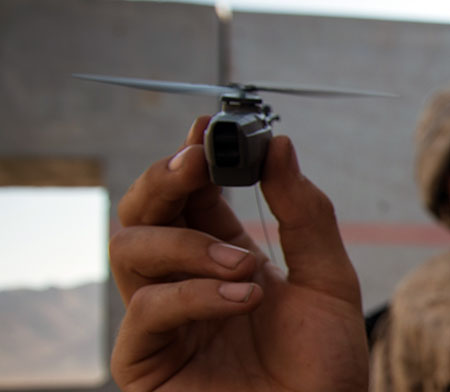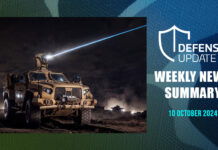

PD-100 Black Hornet 2
Even smaller ‘nano drones’ already appear in the combat zone. The PD-100 ‘Black Hornet’ Personal Reconnaissance System (PRS) from the Norwegian company Proxy Dynamics is one of the smallest nano UAV sensors. It provides end users with a highly mobile sensor system providing an immediate Intelligence, Surveillance and Reconnaissance capability.
The Black Hornet is fielded with the British forces since 2013. More recently it was selected by the Australian and Norwegian military and has been tested by the US Marine Corps, Army, and Special Forces.
The Black Hornet 2 Nano Sensor was designed from the ground up to operate in the field. The platform is a miniature helicopter powered by a small electrical motor driving a two-blade main and tail rotors. The 18-gram nano drone maintains maximum endurance of 25 minutes, depending on temperature and wind condition. Using GPS navigation or visual navigation through the video camera, the Black Hornet can fly autonomously or under operator control, and communicate with its operator over line-of-sight datalink from a distance of 1,600 meters. Operating modes include following pre-planned routes, hover, and stare. Black Hornet uses a forward looking camera (either CCD or thermal) providing a bird’s eye view of the scene. While the drone is pointed to the general direction of interest, the camera can be steered in three axes to point straight to the target, delivering live video or still snapshots.
Due to its small size and electric motors that make it virtually inaudible and invisible beyond short distances. The small size and weight allow operation almost anywhere, at any time without prior airspace coordination and without imposing a risk to the operators or other aerial or ground vehicles.




















